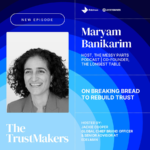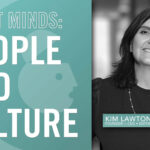By Jonathan Bean, Chief Marketing Officer at Sinch
Marketing loves a neat demographic box. Gen Z wants TikToks. Boomers want newsletters. Millennials are broke but brand loyal. These caricatures are everywhere, baked into briefs, targeting decks, and campaign strategies.
But here’s the inconvenient truth: The lines between generations are more fiction than fact. And the longer marketers cling to them, the more they risk missing the real shifts happening in how to keep their audiences engaged, informed, safe, and happy.
What we’re seeing isn’t a generational divide. It’s an expectations gap. And it cuts straight to the heart of one of marketing’s biggest blind spots: assuming age tells us everything we need to know.
Generations Aren’t Real, But Preferences Are
No one says, “I’m Gen Z, so I’ll click this.” People engage because something feels right. And while Gen Z and Baby Boomers may share very different communication norms, the danger comes from treating those differences as fixed, age-bound truths rather than evolving behaviors.
Consider how a Gen Z consumer reacts to a flash sale: A well-timed push notification with bold graphics might drive immediate engagement. A Boomer, by contrast, might dismiss it as disruptive noise but respond positively to a clear, well-formatted email outlining the offer with trust cues like expiration dates and unsubscribe options. Same message, different outcome—because the delivery didn’t match the receiver’s expectations.
The Real Divide Is About Trust, Not Age
This gap in how generations engage with brands is as much about credibility as it is about design. What feels effortless and intuitive to one group can feel intrusive or risky to another.
Take AI, for example. Sinch research shows that over 70% of Gen Z would work with an AI chatbot for customer support, but only 20% of Boomers would. That disconnect becomes costly when brands deploy “personalized” experiences that ignore how people actually want to engage.
But trust isn’t just at risk because brands are ignoring channel preferences. There’s also a growing mismatch between automation and empathy. In healthcare marketing, for example, this can be especially risky. A chatbot that helps a patient refill a prescription might feel like a win for efficiency, but try using the same tool to explain a change in care coverage, and it quickly falls flat. What looks like smart automation on the surface can come across as tone-deaf when it sidelines the very reassurance patients seek.
Old-school marketing relied on basic segmentation and surface-level personalization: dropping a first name into a subject line, splitting audiences into age brackets, and assuming that was enough. But today, with AI helping us move toward hyper-personalized experiences and “segments of one,” effective communication demands more than static groupings.
What’s emerging is a shift from demographic targeting to dynamic preference mapping. That means more opt-ins, more behavioral signals, and more choice. Some consumers want the full mix: text, email, even calls. Others want minimal intrusion. If people can’t shape how they hear from you, it’s not really personalized.
Even within generations, there’s variability. One 24-year-old might want real-time package updates through text. Another might mute all notifications and only check email twice a week. Segmentation by age group wouldn’t catch that nuance, but a flexible communication stack would.
Stop Stereotyping. Start Listening.
There’s no shortcut here. Cross-generational success depends on how well brands listen to consumers. That starts with real preference tracking and ends with experience design that can flex. Rather than separate strategies for each generation, brands need systems that adjust to individual behaviors, not age.
Some leading consumer brands are already doing this well. Instead of pushing every message to every user, they offer more control over how people engage. Subscription-based services, for example, often allow users to pause updates, switch formats, or tailor topics. That flexibility builds convenience and confidence.
So yes, Gen Z and Boomers use different channels. But the real mistake is thinking that’s the whole story. Reducing people to age groups flattens their complexity and weakens brand relationships. Lasting impact comes from seeing customers as individuals and designing experiences that reflect how they actually engage. That’s how brands stay in tune—and stay in business.
About the Author
Jonathan Bean is an award-winning go-to-market executive and entrepreneurial business leader with a proven track record of scaling technology-driven businesses through high-growth phases. As Chief Marketing Officer at Sinch, a global leader in cloud communications (CPaaS), Jonathan has played a pivotal role in transforming the company from a regional player into a Nasdaq-listed, category-defining brand with over $2.7 billion in annual recurring revenue, more than 4,000 employees, and 900 billion+ customer engagements per year.











